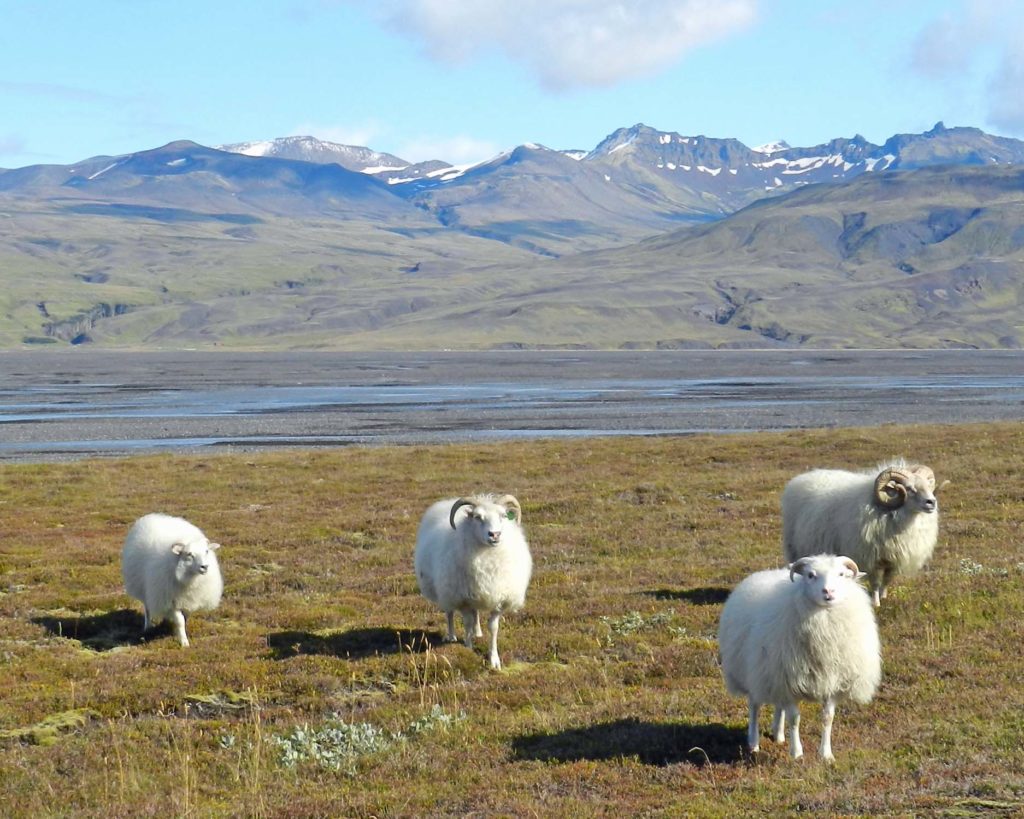The opportunity for outdoor adventure is one of the big draws of Iceland, and no single outdoor adventure site is a bigger draw than Landmannlauger. Situated in the highlands a few hours drive from the south coast, its popularity is based on its combination of exotic remoteness and its relative accessibility compared to many other highland destinations. While it is technically located in the highlands, Landmannlauger is also not nearly as bleek as some of Iceland’s other highland areas that I visited (See post on F35), and features a hot spring set in a landscape of lava debris in an area that also has lots of green.
The approximately 4 hour drive in from the Ring Road coming from Vatnojokull did not disappoint. It took us through a changing landscape that featured rocky outcrops and enough river crossings that I finally felt the investment in the snorkel was worth it.
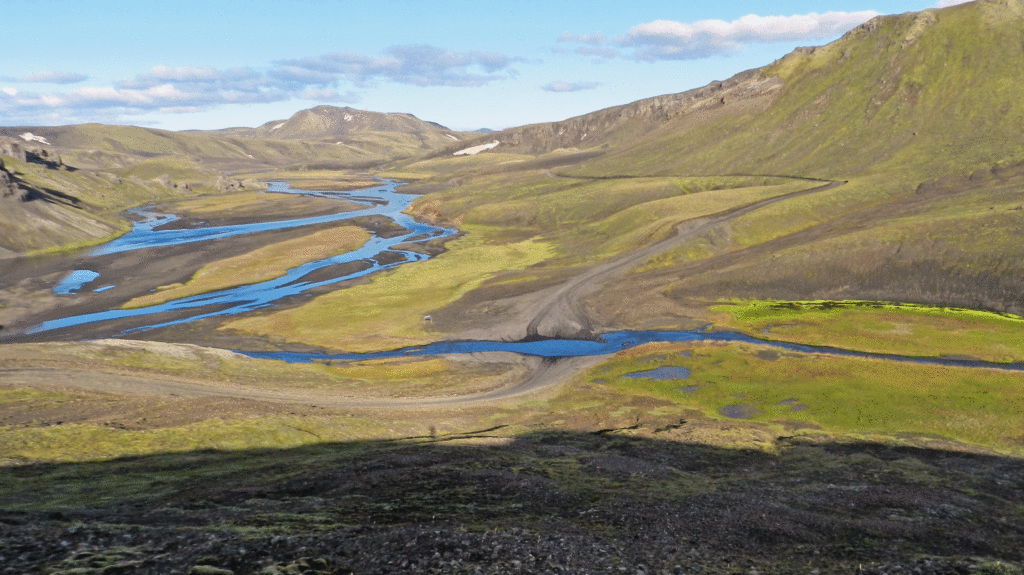
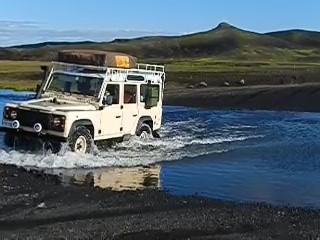
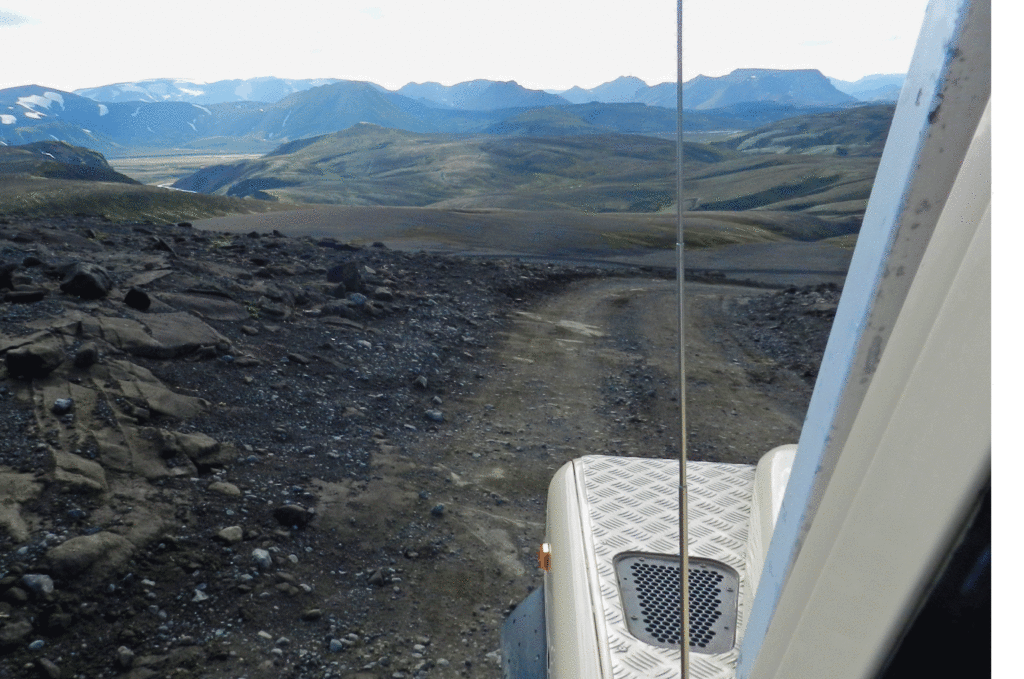
We did not take enough photos of this beautiful stretch of highland road in so I, with credit where credit is due, I am going to use a video taken by another F208 user who captured the experience very nicely. It is a bit long, the latter half contains the more interesting country. Our weather was much better than depicted in this video.
At Landmannlauger itself we had to confront one of the more challenging stretches of the trip because it is preceded by a ford that can be relatively deep. Located a couple of hundred yards from the campsite many visitors who drive themselves in prefer to avoid crossing and park outside and use a pedestrian footbridge to go over the water and walk to the the campground . Just a hundred meters later, the campsite is the starting point for many hikes,to admire the mountains that dominate the site. Stephen and I drove in no problem.
Most visitors are there to hike. There is an established popular 4 day trek trail between Landmannalauger and Thorsmork to the west (see subsequent post of my visit there with Laura) and there are “buses” that make the trip to both ends of the trek on a daily basis. We could not tell if there was a particular preferred direction to make the hike; some of the hundred or so people camped there when we were there had just come off the trek from Thorsmork and some were just heading off in the other direction.
The campsite featured a large open camping area with couple of simple structures to provide showers and a covered eating areas and a more finished building contained dormitory facilities.
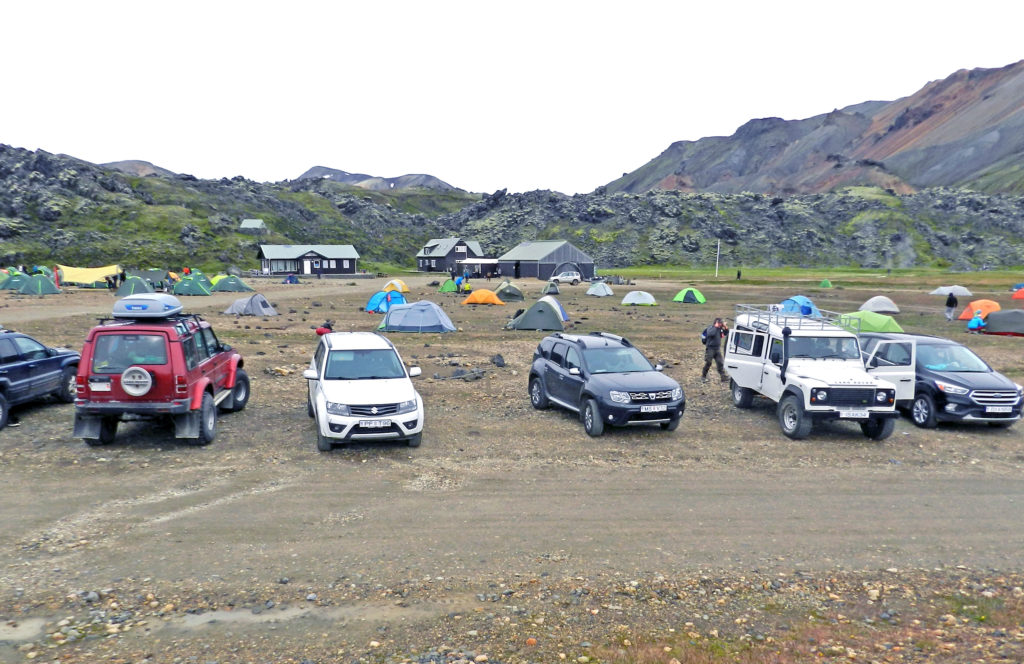
Upon checking in to pay for camping we were issued wrist bands just like the ones one gets at all-inclusive resorts in the Caribbean, but there was no free bar and indeed not very much in the way of facilities. The way it was managed reminded Stephen of refugee camps he had seen in Ethiopia; one could not use the bathrooms or enter the shower area unless you had one of those wrist bands. It was striking how all movements were controlled and managed. Icelanders are not the most welcoming of people.
And of course, Landmannlauger has a hot spring that feeds a natural pool, and we made the most of it. We were there in the early evening and there were only a few of us in there. I had a conversation with an English couple that owned horses at home and had spend some time riding the Icelandic horses. I learned that Icelandic horses are unique in many ways. The relatively small size is a feature I knew about, but apparently they also have a step that no other horses have. We spent a most pleasant quiet hour in the pool, and were pleases with our timing when later we were woken up in our tents by the crowd of late-arriving hikers that had descended s there towards midnight when it was dark.
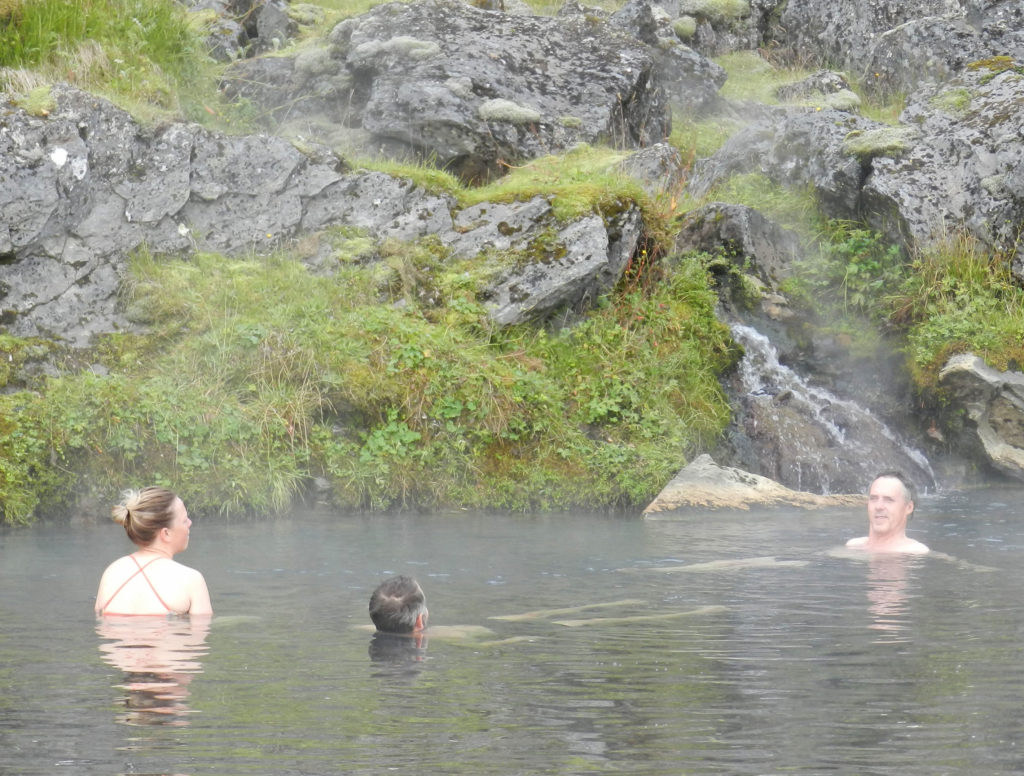
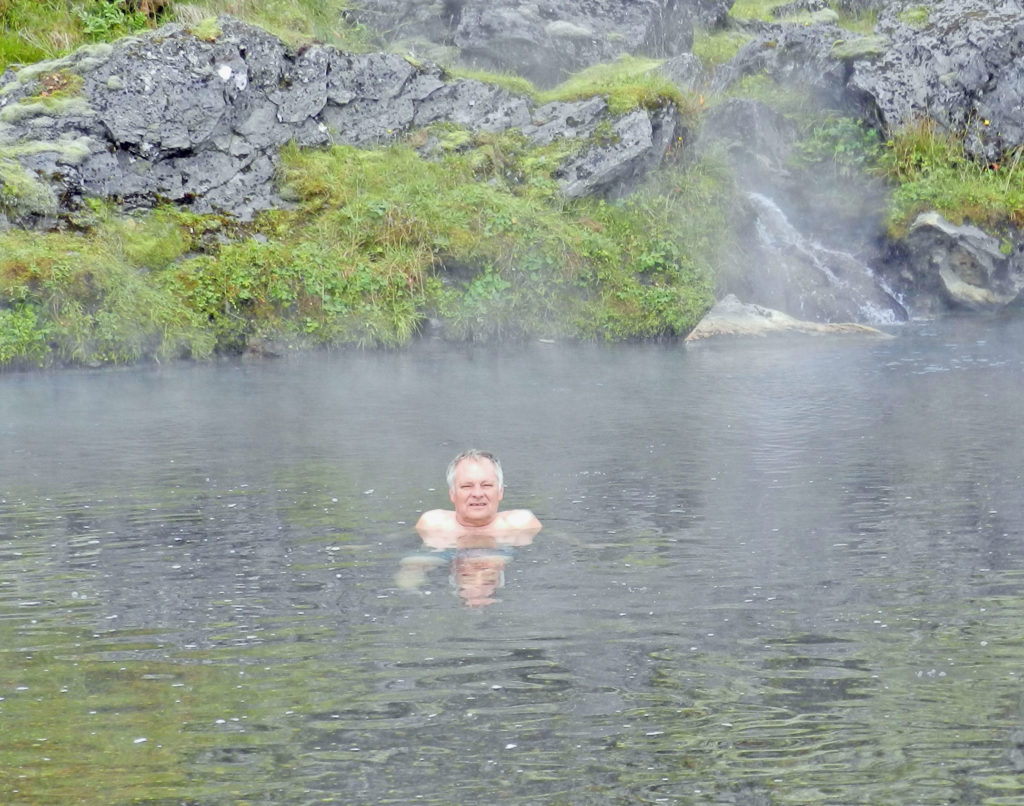
In the morning when I climbed down from the tent Stephen was nowhere to be seen and it was an hour before he returned from a hike along the trail to Thorsmork. After a slow breakfast we hit the road, continuing along the F208 going west, with no real idea of what our destination was . That is actually a wonderful feeling, being in a strange place not sure where you are or where you are going. We had a very pleasant drive coming down from the highlands via the scenic F225, which leads into the bottom (western) end of the F26 cross highland route (the long one that Maurice and I had eschewed in favour of the shorter F 88 for our south-north highland crossing 3 weeks earlier. Shortly after Stephen and I joined it became the paved 26, which meandered through fields and sheep farms.
